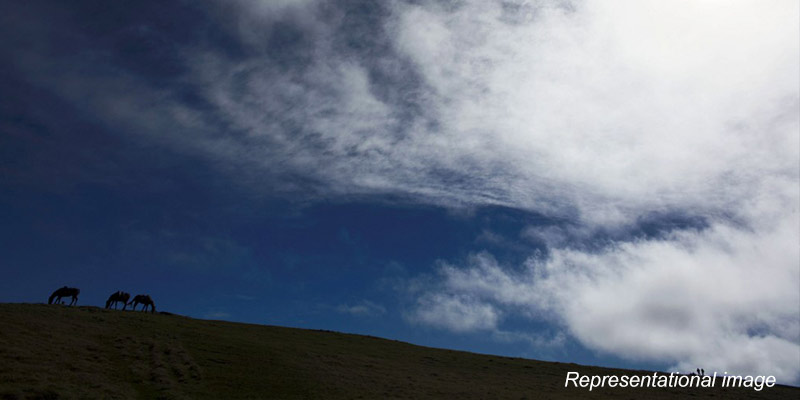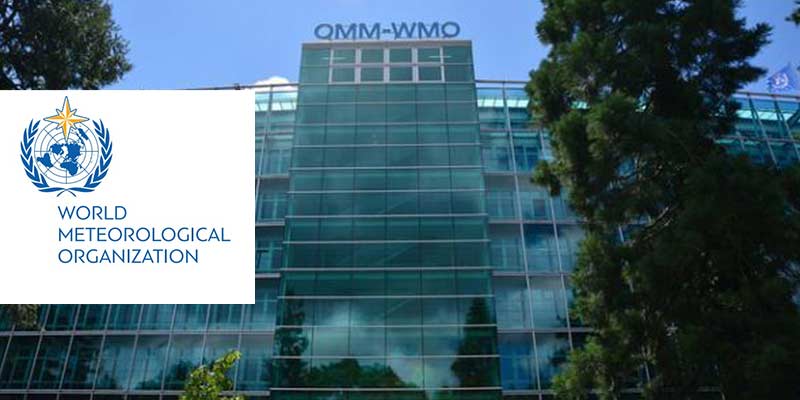- World
- Mar 07
La Nina to be weak and short-lived, forecasts WMO
• The weak but significant La Nina weather event that began in December 2024 is likely to be short-lived, the World Meteorological Organisation (WMO) has announced.
• The latest forecasts from WMO indicate sea surface temperatures in the equatorial Pacific are expected to return to normal.
• There is a 60 per cent chance conditions will shift back to what scientists call an ENSO-neutral temperature range during March-May 2025, increasing to 70 per cent for April-June 2025.
• ENSO (El Nino-Southern Oscillation)-neutral simply means the ocean is neither unusually warm (El Nino) nor unusually cool (La Nina). Likewise, the probability of El Nino developing is very low during this period, the WMO said.
What is El Nino and La Nina?
• El Nino and La Nina events are a natural part of the global climate system. They occur when the Pacific Ocean and the atmosphere above it change from their neutral (‘normal’) state for several seasons.
• It occurs on average every two to seven years, and typically lasts nine to 12 months.
• El Nino, which is the warming of the waters in the Pacific Ocean near South America, is generally associated with the weakening of monsoon winds and dry weather in India.
• It influences weather and storm patterns in different parts of the world. But it takes place in the context of a climate being changed by human activities.
• It is associated with increased rainfall in the Horn of Africa and the southern US, and unusually dry and warm conditions in Southeast Asia, Australia and southern Africa.
• La Nina, which is the opposite of El Nino, typically brings good rainfall during the monsoon season.
• These changes in the Pacific Ocean and its overlying atmosphere occur in a cycle known as the El Nino–Southern Oscillation (ENSO).
• The term ‘El Nino’ translates from Spanish as ‘the boy-child’. Peruvian fishermen originally used the term to describe the appearance, around Christmas, of a warm ocean current off the South American coast. It is now the commonly accepted term to describe the warming of the central and eastern tropical Pacific Ocean. ‘La Nina’ translates as ‘girl-child’ and is the opposite ENSO phase to El Nino.
• However, naturally occurring climate events such as La Nina and El Nino events are taking place in the broader context of human-induced climate change, which is increasing global temperatures, exacerbating extreme weather and climate, and impacting seasonal rainfall and temperature patterns.
Importance of El Nino & La Nina forecast
• El Nino and La Nina associated forecasts are critical for early warnings and taking pre-emptive action.
• These forecasts translate into millions of dollars’ worth in economic savings for key sectors like agriculture, energy and transport, and have saved thousands of lives over the years by enabling disaster risk preparedness.
• La Nina, with its large-scale cooling of ocean surface temperatures in the central and eastern Pacific, changes wind, pressure, and rainfall. Typically, it brings climate impacts opposite to El Nino, especially in tropical regions.
• For instance, during El Nino, Australia often experiences drought, whereas La Nina can bring increased rainfall and flooding. In contrast, parts of South America may experience drought during La Nina but wetter conditions during El Nino.
• Notably, these natural climate events are currently occurring alongside human-caused climate change, which is warming the planet and causing more extreme weather.
World Meteorological Organisation (WMO)
• The World Meteorological Organisation (WMO) is a specialised agency of the United Nations.
• It is the UN system’s authoritative voice on the state and behaviour of the Earth’s atmosphere, its interaction with the oceans, the climate it produces and the resulting distribution of water resources.
• The WMO has 193 Members, including 187 Member States and 6 territories, maintaining their own meteorological services.
• It originated from the International Meteorological Organisation (IMO), which was founded in 1873.
• Established in 1950, WMO became the specialised agency of the UN in 1951 for meteorology (weather and climate), operational hydrology and related geophysical sciences.
• WMO facilitates the free and unrestricted exchange of data and information, products and services in real or near-real time on matters relating to safety and security of society, economic welfare and the protection of the environment. It contributes to policy formulation in these areas at national and international levels.
• WMO coordinates the activities of National Meteorological and Hydrological Services in 193 States and territories so that basic weather, climate and water services are made available to anyone who needs them.
• The Secretariat, headquartered in Geneva, is headed by the Secretary-General.
Manorama Yearbook app is now available on Google Play Store and iOS App Store


